About Our Team
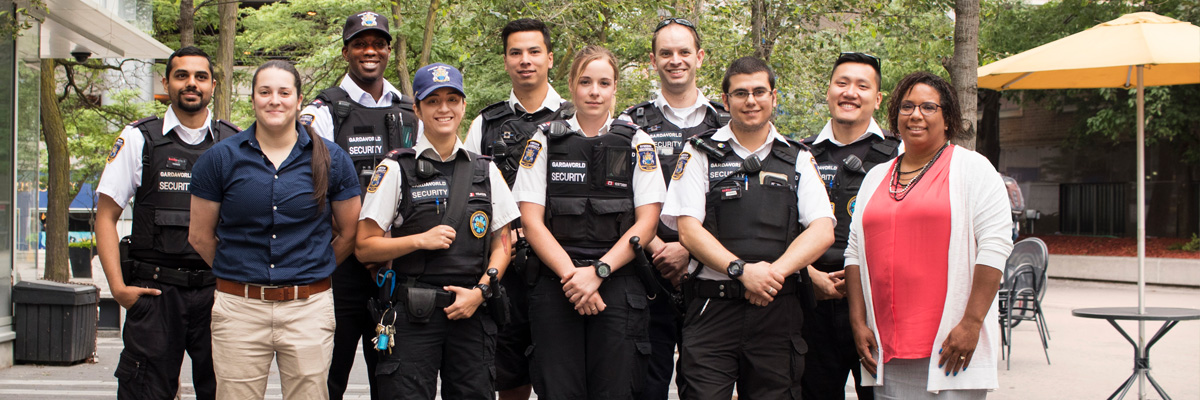
Community Safety and Security’s highest priority is the safety of all community members. From students to external visitors, our team makes every effort to have positive interactions with everyone we encounter.
Inclusion is at the core of campus safety
The university’s commitment to equity, diversity and inclusion has significantly influenced our service delivery model. We invest in mandatory training on topics such as anti-oppression, anti-racism, suicide intervention and sexual violence, which allows our team to understand the needs of all community members, including racialized and marginalized groups.
How to identify Community Safety and Security staff
Community Safety and Security staff wear uniforms and attire designed to make it easy for community members to visually identify members of the team by their roles and functions, as well as differentiate them from security guard uniforms used by non-university guards employed by neighbouring businesses and organizations.
If you need emergency assistance, approach any Community Safety and Security staff member
While the new uniforms and attire make it easier for you to identify a staff member’s role, in the event of an emergency or if you have immediate safety or security concerns, please approach any member of the Community Safety and Security team for assistance, regardless of what they’re wearing.
TMU’s full-time security guards provide frontline security coverage and emergency response support to the campus community. They work across a number of internal teams like the Emergency Services and Community Response units and fill a variety of roles on campus, serving as certified Emergency Medical Responders (EMRs), dispatchers and auxiliary guards in key buildings like campus residences and parking lots.
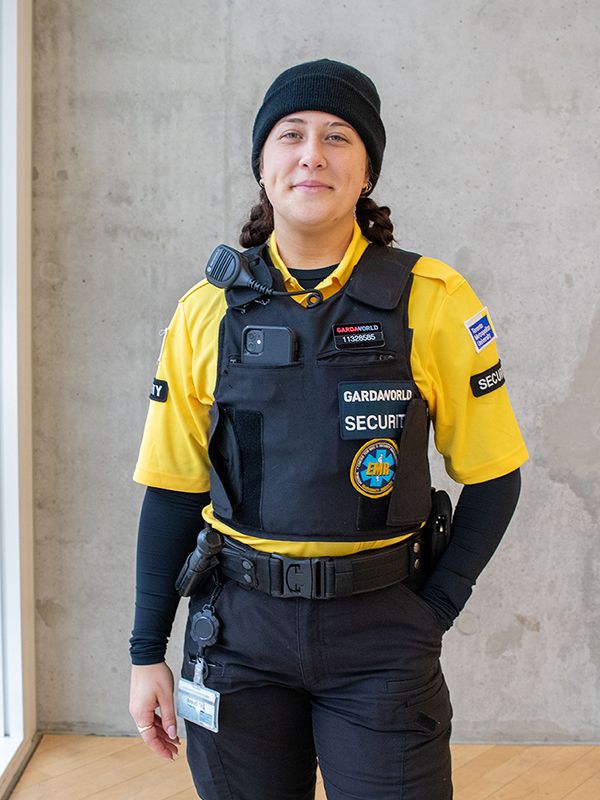
How to identify a full-time security guard
A full-time security guard’s uniform consists of:
- A yellow short-sleeved polo with the following patches across the chest or shoulder:
- Toronto Metropolitan University logo
- GardaWorld Security
- Security
- A black protective vest with their security guard license number
Along with providing on-the-ground security support coverage, shift supervisors also oversee the daily schedule and shift assignments of security guards, facilitate training and development opportunities for staff and act as the primary liaisons between frontline staff and Community Safety and Security leadership.
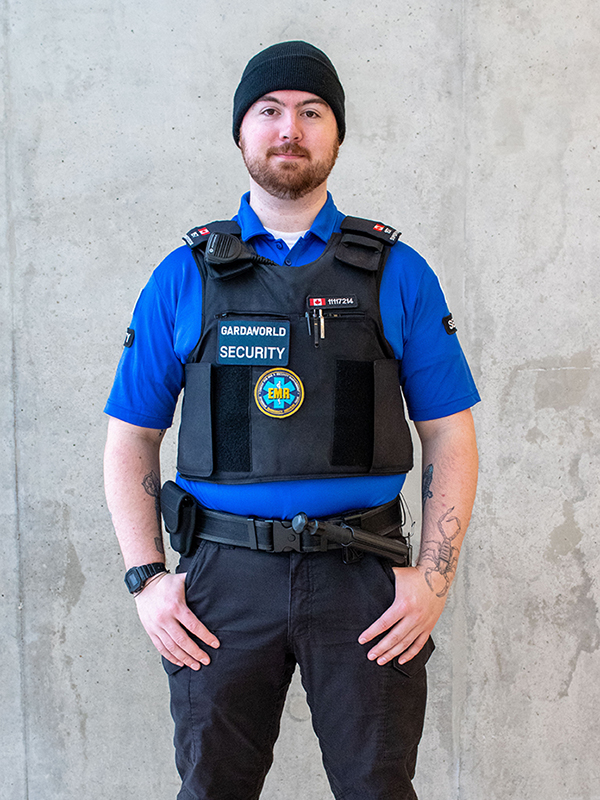
How to identify a shift supervisor
A Shift Supervisor’s uniform consists of:
- A blue short-sleeved polo with the following patches across the chest or shoulder:
- Toronto Metropolitan University logo
- GardaWorld Security
- Security
- A black protective vest with their security guard license number
In some instances, TMU temporarily hires additional GardaWorld employees who are not assigned to our campus full-time to provide special coverage for events or during anticipated disruptions on campus like rallies or protests. While these staff are available to assist you, please be aware that they may be less familiar with the TMU campus than guards wearing yellow or blue polos.
Note: GardaWorld security guards employed by other local businesses and organizations are issued the same white uniform as extra coverage security guards at TMU.
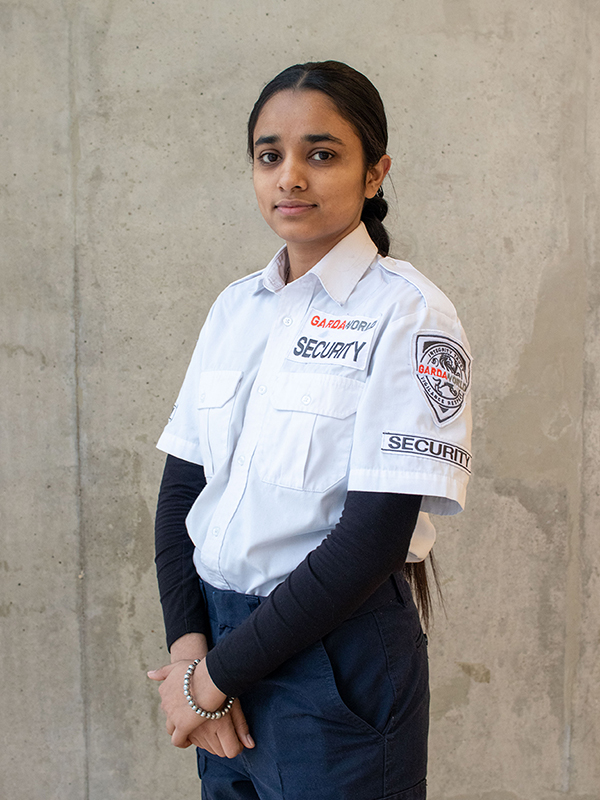
How to identify extra coverage security guards
An extra coverage security guard’s uniform consists of:
- A white short-sleeved polo with the following patches across the chest or shoulder:
- GardaWorld Security
- Security
- GardaWorld crest
TMU’s Crime Prevention and Community Engagement team works proactively to reduce and deter criminal activity and provide tailored harm reduction supports and referrals for street-involved individuals on campus.
These staff members actively develop and maintain relationships with street-involved individuals who frequent our surrounding neighbourhood and experience challenges with addictions, mental health or the effects of being unhoused. With team members embedded in the Strategic Outreach and Support Team (SORT) pilot project, they work with social agencies and the City of Toronto to advocate for tailored services for the broader TMU community, including street outreach and housing-related support services.
The Crime Prevention and Community Engagement team also facilitates immersive, skill-based workshop and training opportunities designed to empower the TMU community to respond more confidently to potential threats to their personal safety.
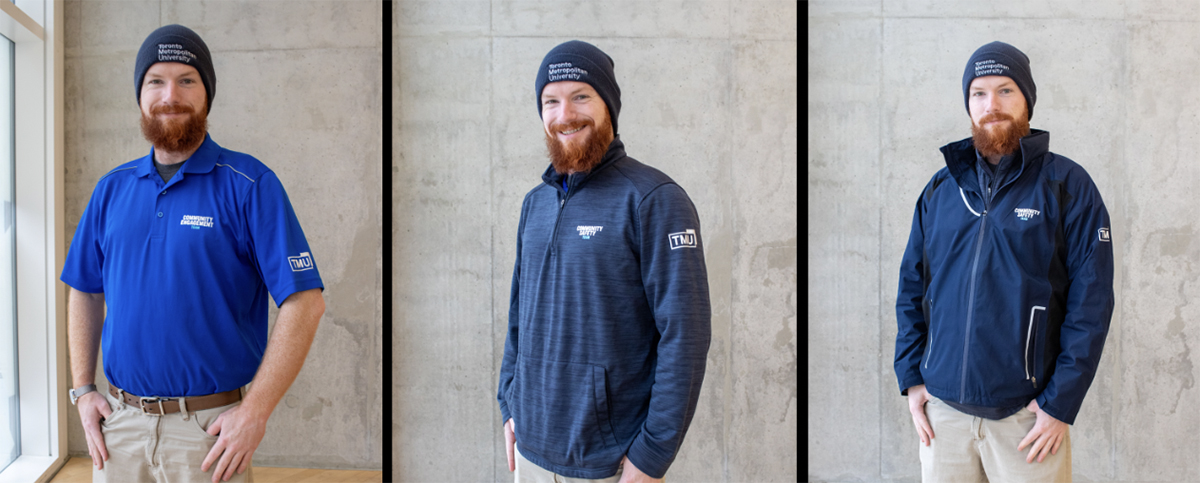
How to identify Crime Prevention and Community Engagement staff
Members of the Crime Prevention and Community Engagement team may wear any of the following:
- A blue short-sleeved polo with the following patches across the chest or shoulder:
- Community Engagement Team
- The TMU one-colour brand mark
- A grey quarter-zip sweater with the following patches across the chest or shoulder:
- Community Safety Team
- The TMU one-colour brand mark
- A grey windbreaker with the following patches across the chest or shoulder:
- Community Safety Team
- The TMU one-colour brand mark
Community Safety and Security units
The Crime Prevention and Community Engagement team aims to reduce and deter criminal activity on the TMU campus and deepen community relationships and trust through intentional interactions between Community Safety and Security and the community we serve.
We attain this by:
- Providing the TMU Community with effective subject matter expertise in crime prevention tools and techniques.
- Building and maintaining relationships with community partners and key stakeholders.
- Fostering a sense of community and collaboration with TMU Community Safety and Security and its partners.
- Playing a key role in overall community safety and security and university asset protection.
- Supporting targeted education initiatives for our community.
Emergency Management and Preparedness is responsible for developing and maintaining policies, procedures and initiatives to prepare the community to be better able to respond to and recover from emergencies.
We work to organize and manage resources and procedures for dealing with all aspects of emergencies (prevention, mitigation, preparedness, response, and recovery) by:
- identifying potential risks;
- developing and maintaining emergency plans;
- developing procedures;
- conducting emergency tabletop, functional and full scale exercises;
- delivering training; and
- maintaining the university’s mass notification system.
Our department’s Investigations Office is responsible for the investigation of crime and other security incidents directly impacting the campus. Our objective is to:
- reduce crime;
- recover property;
- identify suspects;
- establish vulnerabilities;
Our team reviews reports of criminal and security incidents; interviews people with potential knowledge of incidents; collects, preserves and presents evidence; liaises with stakeholders, engages in major case management and liaises with external law enforcement, criminal courts and internal judicial bodies. We pass along matters to the Crime Prevention and Community Engagement Office for follow up.
Successfully identifying suspects, recovering property and providing evidence for appropriate proceedings, coupled with effective crime prevention practices, plays a very significant role in reducing criminal incidents and security risks.
The Risk Management Office helps the university identify, assess and respond to potential risks of violence to students and employees at the university. The team often works collaboratively with several other departments in the university to provide a comprehensive approach to each situation in a structured process, following these steps:
- Intake
- Early Assessment
- Triage
- Data Collection
- Analysis
- Risk Management Plan
- Communications and Follow up
The team also conducts event risk assessments to help make events as safe as they can be. This is done collaboratively and follows the Event Risk Assessment process for both students and employees.
Currently, our security guards provide front-line response to issues and concerns in security and emergency response-related areas on campus who:
- deliver 24/7 coverage of the campus;
- respond to emergencies and offer emergency medical assistance;
- provide WalkSafe escorts; and
- perform safety patrols on foot and by bike.
Our staff are highly-qualified security professionals contracted by GardaWorld Protective Services who receive additional, comprehensive, TMU-specific training.
Advanced medical expertise
In addition to basic CPR training, TMU's front-line crew members have advanced medical knowledge, including:
- Emergency Medical Responder (EMR) training; and
- International Trauma Life Support (ILTS) training for both the general population and pediatrics in order to support the Toronto Metropolitan University Early Learning Centre.
This equips crew members with skills in prehospital trauma care, commonly offered by paramedics and first responders.
To ensure community members are provided with adequate support services, we collaborate with campus partners like TMU’s Centre for Student Development and Counselling.
Security Infrastructure Services is responsible for planning, designing, installing and managing the array of security systems infrastructure on campus:
- building perimeter systems;
- client systems;
- card readers;
- door contact alarms;
- locking automation;
- motion detectors; and
- security cameras
We work with internal stakeholders to provide Crime Prevention Through Environmental Design (CPTED) approaches, risk based infrastructure planning, installation project management and ongoing infrastructure support and management.